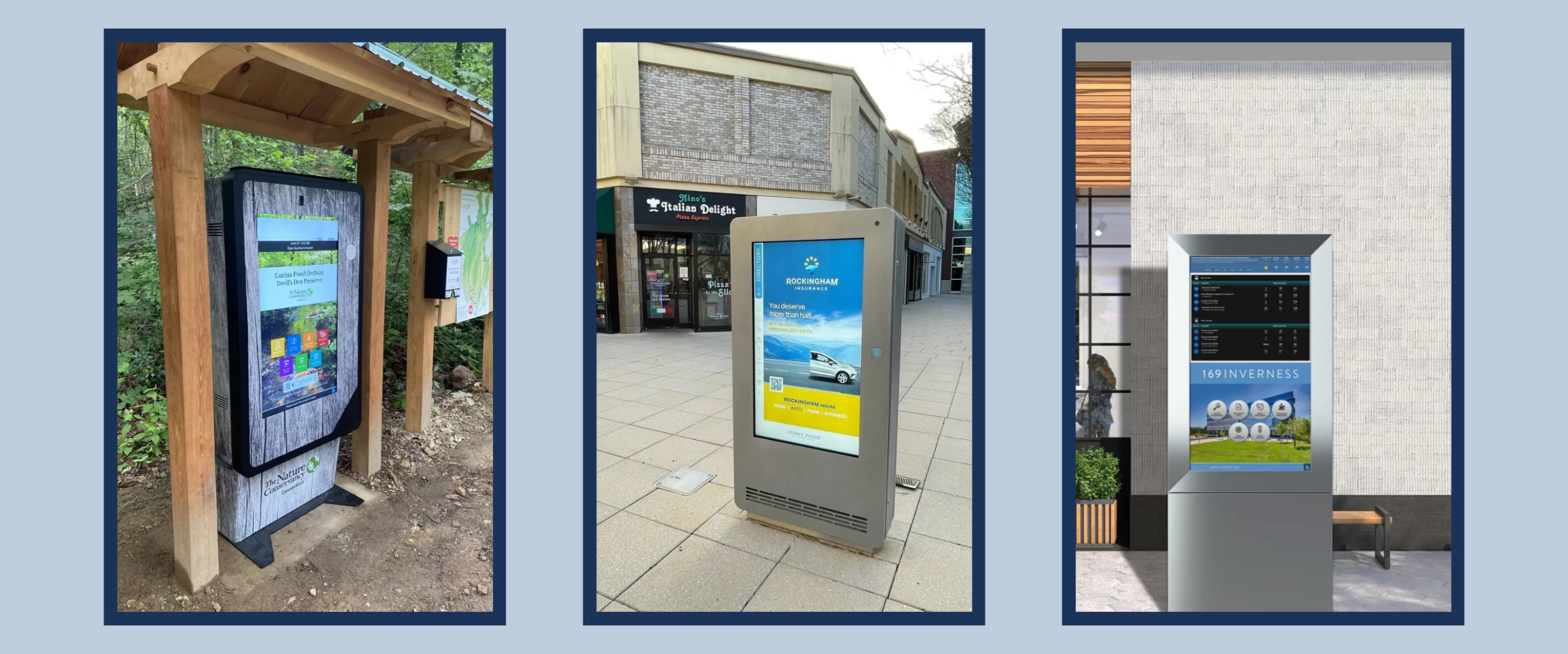9 Post-COVID Trends in Digital Building Infrastructure that Deliver Experience, Empathy and Agility
Digital Technology Trends for a Transformed World
As we emerge from the shock and awe of the global coronavirus pandemic, we’re all trying to understand what changes will become a part of the new norm. We believe the following trends are driving a rapid shift in digital infrastructure that better serves people and delivers incredible agility at a time when we need it the most. Forward-looking community managers, facility managers, property owners and commercial real estate professionals are already at work to adapt. Many are upgrading their digital building and campus infrastructures during the slow down so that they can get ahead of the curve. Here’s what they know and are responding to.
1. Information changes quicker than paper
As we all watched the pandemic spread, news and policies changed two to three times a day. We saw pictures of frustrated facilities teams pasting new policies and posters almost as frequently. If there is on lesson learned from COVID-19, it’s that we all need to move at the speed of information. The days of posting paper notices and posters around campuses will come to an end. Organizations will embrace digital solutions that can be updated quickly and display orchestrated content that aligns with the policies and information for that precise moment in time.
2. Virtual is now real
For over a decade, we’ve been discussion how to enable cloud-delivered applications any place and anywhere. And yet many commercial real estate, medical office buildings, universities and hospitals are still buried with legacy on-premise systems. During the pandemic we have learned that buildings, communities, and cities can go from open and available to closed and inaccessible within a day. Coming out of the pandemic, “cloud-based goals” will switch to “cloud-based mandates”. The platforms that require onsite servers or services will be pushed out with at a pace not seen since the Y2K upgrades.
3. It’s no longer digital signage vs mobile apps, it’s all of the above
For those of us in the digital signage and digital wayfinding industries, there has always been “competition” from mobile or app-based solutions. Those debates are finished with no winner. It was a tie, because this pandemic showed that we need “all of the above” solutions. When hospitals had an influx from entirely new patients, nobody had the apps for their facilities and the mobile model went out the window. When healthcare systems had to send home their at-risk volunteers, there was even more chaos in the lobbies of facilities. And as digital signage isn’t placed everywhere and at every entrance, people searched for the right path to care. Post-COVID, we will see rapid unification of tools for wayfinding assistance. Digital signage must extend to mobile to enable people to take maps with them, while also enabling a mobile-led experience for those not wanting to touch displays. The “all of the above” domain has arrived, and it is here to stay.
4. Digital needs to start with user experience and empathy
The pandemic has been frightening for all. We feel disoriented and scared of our surroundings and the people around us. In addition, there has been more and more digital devices thrown into our faces instead of people. Unfortunately, even more fear is generated from those experiences. As we move forward through this pandemic, technology companies and UX designers will present digital experiences that better align with the empathy and care that is needed for our most vulnerable populations. There will now forever be a link between communication and emotion that we hadn’t seen before.
5. ADA matters more than ever
As the pandemic grew, many advocates for the disabled made their voices heard and their images seen as they struggled to enter buildings, communicate with colleagues, or get the care they needed. ADA policy created a groundwork for support of the disabled community but there are still gaps. Digital signs aren’t consistently ADA compliant for those in wheelchairs. Emergency communication isn’t consistently available for the hearing impaired. Visual solutions aren’t adequately supporting the vision impaired. The pandemic will become a galvanizing force for true accessibility across all communities.
6. Language matters
The data in many urban centers is that the pandemic is striking more heavily in low income communities where English is not the primary language spoken at home. Experts are still pouring through the data, but signs point to the need for public health messaging and communications to support many languages. With the diversity of languages, the English/Spanish language paradigm is proving to be outdated. We believe that facility managers will be required to provide communication, information, mapping, and bulletins in languages that their visitors, patients, or constituents select.
7. The digital divide needs to be crossed across all communities
As schools across the country moved to virtual, the digital divide proved to be a canyon of inequity. That divide starts with broadband access across communities but extends to availability of tools and technologies for all to utilize. Clearly the coming ubiquity of 5G will help, but in many communities that is years away. The post-COVID world will have more community hotspot capability to create ad hoc access to broadband and, potentially, more digital drop-in capabilities at grocery stores, post offices, and other essential facilities. As libraries shuttered, the digital divide widened but any digital sign can be a hotspot and any kiosk could be an access point and those solutions are going to start moving forward rapidly.
8. Sensors can be used for good, not just people counting
For the past few years, retailers and mixed-use facilities have been deploying sensors and cameras to aid in their marketing efforts. As COVID-19 raced through communities, that data showed the fast drop of shoppers to retail spaces and other “tracked places”, but there are researchers who are now using the marketing tools of shopper tracking, mobile app location tracking, and social media impressions to track the spread of COVID, social distancing, and contact with infected people. That quick twist on a pure marketing platform is going to accelerate quickly. Concerns about sensors and the debate on privacy is also likely to evolve. The anonymous data coming from a well-run sensor ecosystem could help a facility manager stay ahead of spread and social crowds as the country starts to interact again. What is for certain is that this technology will become more of the norm in digital facility infrastructure.
9. Digital natives will define the future
Despite the Boomer vs Gen Y debates and arguments, one thing has been painfully clear during the pandemic: Gen Y was ready for a virtual world better than any other generation in history. The switch from in-person to virtual had already happened with online gaming, social apps, and group chats for those under 30. The rest of us slowly adapted our tools and mindsets to adapt to this world. Now as we look forward, those “digital natives” who were born in the shadow of 9/11 and are of age during COVID-19 will define the experience, technology, and interaction norms of the future. The integration of social, contextual, and fully interactive technologies will combine to create user experiences that are not just innovative but are required to serve our new tech leaders, even if they are just 19 years old today.













